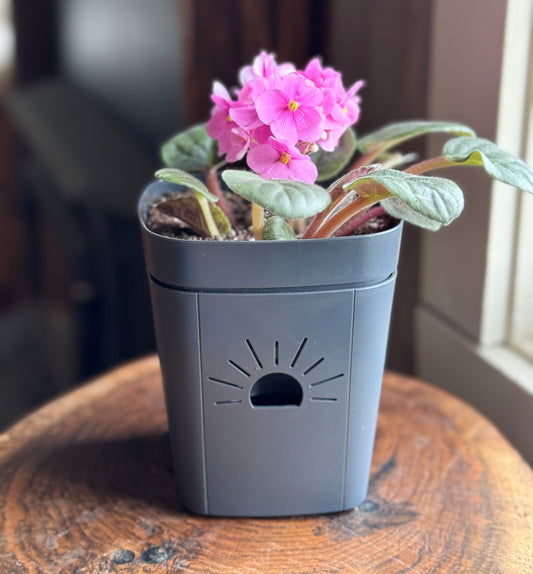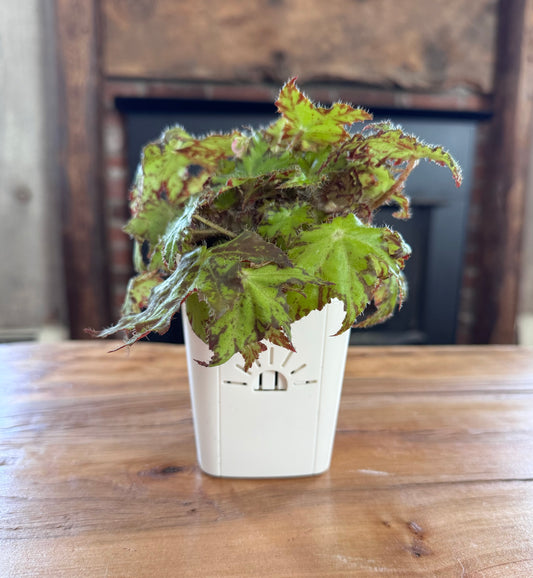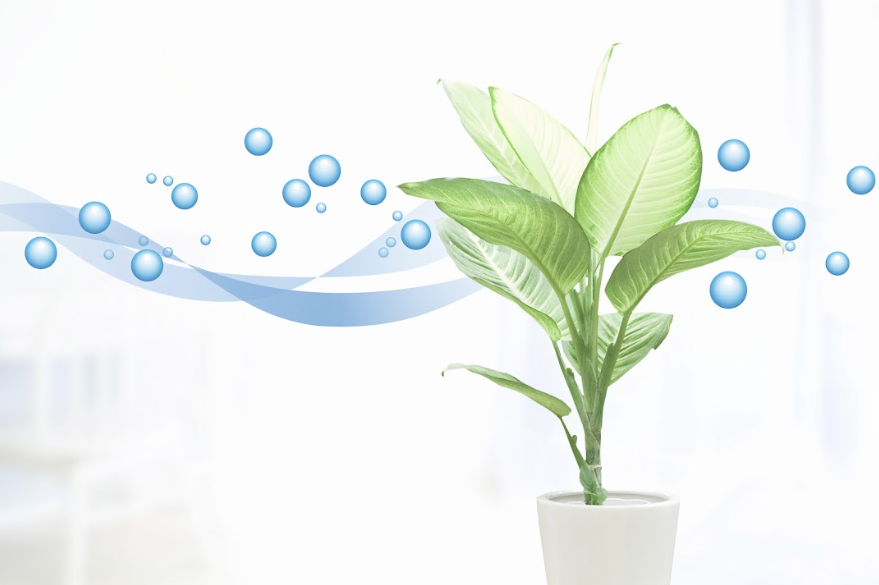Origins
Anthurium is a genus of over 1,000 species native to the Americas, ranging from Mexico and Argentina to parts of the Caribbean. They have been cultivated by home growers since 1829 and are more and more popular every year.
They are famous for their showy flower spathes with bright colors and attractive foliage, which come in many shapes and sizes. Common names for Anthurium include flamingo flower, tailflower, laceleaf, painted tongue, painter’s palette, Hawaiian love plant, Hawaiian heart, and oilcloth flower.
Light
Requirements
Anthurium plants should be kept in a bright spot but not in direct sunlight. They can adapt to lower light conditions and are often grown under fluorescent lights. If you live in the Northern Hemisphere, east-facing windows are the ideal location as they will get some morning sun without being too intense. This location will prevent the leaves from developing brown, burnt tips.
Genus Summary
| GENUS | Anthurium |
| COMMON NAMES | Flamingo Flower, Painted Tongue. |
| LIGHT | Medium to Low Indirect |
| WATER SCHEDULE | 14 days |
| WATER REQUIREMENTS | Keep the soil evenly moist but not soggy. |
| HUMIDITY | High |
| TEMPERATURE | 65-85°F |
| FEEDING | 1x month |
| TOXICITY | Mildly toxic to humans and animals |
| PESTS | Mealybugs, aphids, thrips, scale, spider mites |
| DISEASES | Xanthomonas blight and Rhizoctonia root rot |
| POT | Maximum aeration |
| SOIL | Chunky orchid bark mixture |
| FERTILIZER | Rarely |
| PROPAGATION | Division, cuttings, water |
| PRUNING | Only to remove dead leaves and spathes |
| SIZE | Miniatures 3” to giants 6’. Average 24-36”. |
Water Requirements
Anthuriums can be watered on a 14-day schedule if grown in a Naked Root planter.
They like soil that is evenly moist but not wet. In the rainforests where they grow, the soil is humus-rich, free draining, and there is maximum root aeration. Ideally, we want to imitate that kind of environment for these lovely tropical houseplants.
Humidity
As with most tropical houseplants, Anthuriums like high humidity. They benefit from being grouped together or placed near a humidifier. In nature, they grow in rainforests under the tree canopy surrounded by other plants that all respirate, creating a luscious humid environment.
Temperature
Anthuriums thrive in normal household temperatures between 60-85°F. If it gets colder or hotter than that, the leaves tend to curl up, and they stop producing flowers until the conditions are back to normal. If the temperature gets down to 55°F or below, they can suffer or die.
Toxicity
Anthuriums contain calcium oxalate crystals that are mildly toxic to humans and animals. It can cause mouth and eye irritation upon contact. The lips, tongue, and throat will burn. Some people will have a worse reaction with blistering and swelling. It can cause stomach aches or vomiting if ingested. In small animals and children, you may see diarrhea and excessive drooling.
Pests and Diseases
Anthurium can be affected by common pests like mealybugs, aphids, thrips, scale, and spider mites when grown as an indoor plant. Identifying the type of pest and taking prompt action to eliminate them is important. Additionally, Anthurium is prone to bacterial and fungal diseases, such as Xanthomonas blight and Rhizoctonia root rot which can be caused by overwatering.
Pot
Drainage is crucial when it comes to growing Anthurium in a pot. They need air around the root zone as they would in nature. Plants breathe from the roots, and this is especially important for plants with knobby, tuberous, or fleshy roots.
Protect your Anthurium from root rot by selecting a pot that stimulates fibrous root growth and quick water absorption. An air root pruning container is ideal. The second best option is an unglazed clay or cement pot.
Soil
Anthuriums prefer coarse, chunky soil. In nature, they grow in leaf litter and moss under trees, not in deep soil. Commercial bagged soil designed for orchids is ideal. Anthuriums do not grow well with soil packed tightly around the roots. They smother! You can mix your own potting mix with equal parts pink bark, perlite, and peat moss. This blend will be both rich and free-draining enough to suit an Anthurium.
Fertilizer
Oddly, Anthuriums will flower indoors for 12 months of the year but rarely require fertilizer. In fact, they are one of the easiest plants to overfeed. If they are in ‘new’ soil (less than two years old), do not feed them at all. After they have been living in the same pot and soil for a couple of years, you can choose to either feed or plant them in fresh soil. The fresh soil option will guarantee that you do not overfeed your Anthurium.
If you choose fertilizer, a balanced fertilizer (10-10-10) will encourage foliage and flower growth. Dilute the fertilizer to a quarter-strength. Anthuriums are easy to burn with fertilizer, so err on the side of too little. You can select a higher phosphorus mixture if you have plenty of leaves but few or small flowers.
Propagation
The best time to propagate an Anthurium is when they are quite old and have nearly stopped flowering. At this time, propagation by division or taking cuttings will help revitalize the failing plant. Gently pull the plant into two or more pieces wherever it easily comes apart.
However, you don’t have to wait for your Anthurium to age before propagating. If you are growing impatient, you can take a cutting from a younger Anthurium. Be sure that the cutting contains a whole stalk (the woody stem part) and at least one node (two is better).
You can plant the cutting directly in its own pot with soil, using the same chunky mix you used for the original plant. Or you can plant in sterile perlite to let the roots get started.
It is possible to root the cuttings in water, but this method creates the danger of bacterial and fungal infections, which are already an issue for Anthuriums. Water rooting also makes it harder for the plant to adjust to living in soil when transplanted.
Pruning
The only pruning you need to do for an Anthurium is to remove yellowing leaves and aged or wilted flowers. Removing the old flower spathe encourages the plant to grow a new one!
10 Striking Varieties and Cultivars
There are so many stunning cultivars of Anthuriums available now it is almost impossible to pick only ten! Here are a few of our favorites:
- Anthurium andreanum is one of the most commonly sold and easiest to find, which is important when first starting with houseplants. This lovely Anthurium will surprise you with either white, red, lime green, coral, or pink heart-shaped spathes all year long. The cultivar’ Black Love’ has dark purple spathes that are almost black. ‘Fire Glow’ has deep red spathes lasting more than 30 days each.
- Anthurium veitchii ‘King Anthurium’. This Anthurium is a king indeed, with leaves up to six feet long in deep green; it is a sight to behold. Each leaf is pleated, like rippling scales, and tinged slightly red underneath. It produces spathes that are light green and cream. It is hard to believe that this wonderful plant grows easily indoors.
- Anthurium ‘Ace of Spades’. This Anthurium has thick, velvety-textured leaves that are purple-green, sometimes so dark they look black. The veins are a lighter green. New growth is lime green, making for a plant with many colors and textures to delight the eye.
- Anthurium ‘Dark Moma’. Dark Moma (sometimes nicknamed Dark Mama) is a hybrid of A. warocqueanum and A. papillilaminum. It has green leaves that are 16 inches long and have a velvety ribbed texture. The veins are golden yellow, which makes for a lovely contrast.
- Anthurium regale. Amazingly, a plant this stunning can also be easy to grow. Regale has gigantic leaves that can reach 35 inches long and have a soft feathery feeling. The dark green leaves are veined in cream. All it needs to thrive is indirect light, chunky soil, and high humidity.
- Anthurium crystallinum. This variety used to be hard to find, but they are surprisingly common today. And for a good reason, they are easy to grow! This Anthurium has dark green leaves that grow 16 inches long and 12 inches wide. They have bright white contrasting veins and spathes that are purplish with a sweet smell.
- Anthurium Luxurians. This variety is one of the few Anthuriums that can handle less than 50 percent humidity. It is slow-growing and puts out a new leaf about every three months. The leaves are thick and quilted and dark green with even darker green veins.
- Anthurium Amnicola ‘White Lady’. This variety is a good choice if you don’t have space for one of the gigantic Anthuriums. This more compact option is a hardy indoor plant. It sends up pure white spathes that last for more than a month.
- Anthurium Superbum. This Anthurium has broad green leaves with purple undersides. The leaves grow in an upright rosette pattern, giving this plant the nickname of the bird’s nest. The ripply textured leaves are narrow and grow to over a foot long.
- Anthurium Radicans. This unique Anthurium is small enough (30 inches tall maximum) to grow on a tabletop. Dark green, deeply quilted leaves start lime green when young and darken with age. The leaves are shiny, and the bold maroon and purple spathes grow all year. This Anthurium is a good choice if you live in an arid climate and want to try growing one in a terrarium.
Summary of Anthurium Plant Care
Anthuriums are low-maintenance houseplants that thrive in humid and warm environments. They rarely need fertilizing or repotting and will delight you with colorful flower spathes all year long. Provide bright (not direct) sunlight and propagate by division.





 Verified Buyer
Verified Buyer









